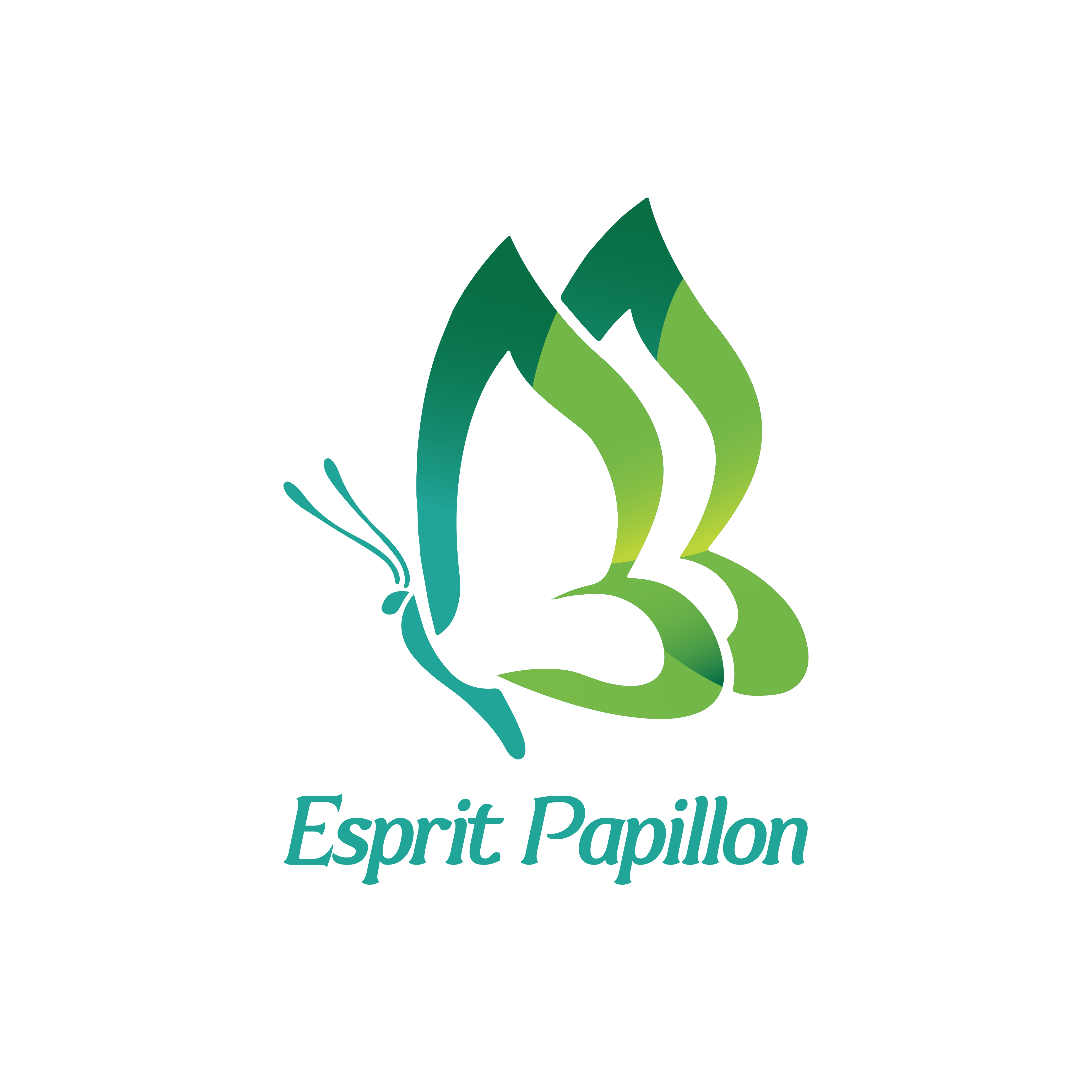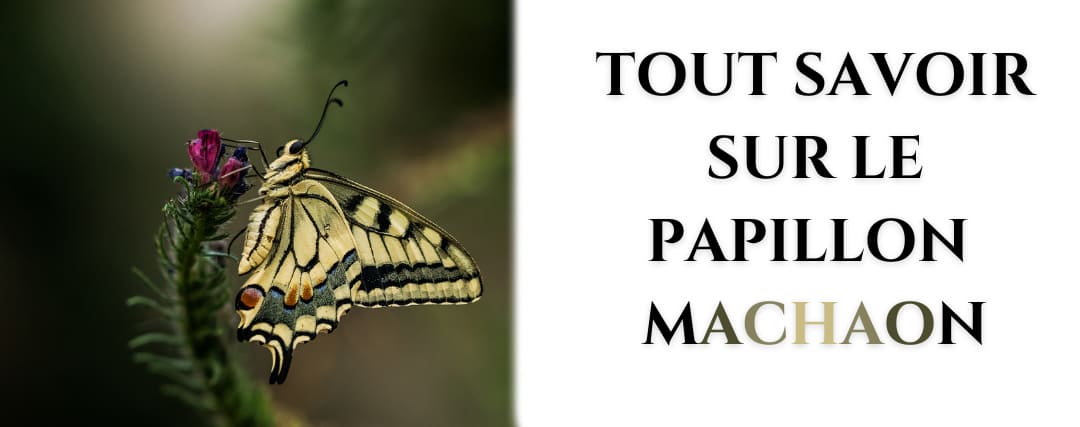In the kingdom of nature, few sights are as captivating as the fluttering dance of a butterfly. Among these, the swallowtail butterfly stands out for its majestic colors and distinctive tail-like extensions. But, this creature is not just a feast for the eyes. It plays a central role in maintaining the health and vitality of our ecosystems, making its existence an integral part of ours.
The swallowtail butterfly is one of the most striking and diverse species, with its existence documented in various habitats around the world. Its fascinating life cycle, stunning physical attributes and essential ecological role arouse curiosity and have important implications for the environment and humanity.
Let's begin immediately to enter the world of the swallowtail butterfly by laying the foundations to better understand what characterizes this sublime lepidoptera.
Characteristics of the swallowtail butterfly
To appreciate the beauty of the swallowtail butterfly, it is important to first understand its place in the animal kingdom and its unique physical characteristics that set it apart.
The scientific classification of the swallowtail butterfly
Swallowtail butterflies belong to the family Papilionidae. This family is known for its large, colorful species, and of course, the swallowtail butterfly is no exception.
Within this family, the swallowtail butterfly belongs to the genus Papilio, home to many different species around the world. It is in this varied and dynamic genus that the butterfly earned its French nickname, "swallowtail butterfly", also known as the Old World swallowtail.
In summary, the complete scientific classification of the swallowtail butterfly is as follows:
- Animal Kingdom
- Phylum: Arthropods
- Class: Insects
- Order: Lepidoptera
- Family: Papilionidae
- Genus: Papilio
- Species: Papilio machaon
Physical characteristics of the swallowtail butterfly
One of the most distinctive features of the swallowtail butterfly is its tail-like extension on the back of its hindwings. These "tails" act as a false head, drawing predators' attention away from the butterfly's vulnerable body and head.
In terms of size, the swallowtail butterfly is among the largest, often measuring 8 to 14 centimeters in wingspan. Its body is mostly covered in scales, which gives it its vibrant colors and intricate patterns.

However, what really catches observers' attention is its stunning coloring. This butterfly typically features vibrant yellow wings adorned with black vein markings, blue spots, and red eye spots. This captivating array of colors not only makes it one of the most visually appealing butterflies, but also serves as a survival strategy, warning potential predators of its unpleasant taste.
The life cycle of the swallowtail butterfly
The life cycle of the swallowtail butterfly is a remarkable transformation process, known as metamorphosis, which includes four main stages: egg, larva (caterpillar), nymph (chrysalis), and adult (imago).
The cycle begins when a female swallowtail lays her spherical yellow-green eggs on the leaves of a host plant. After about a week, the egg hatches into a caterpillar, which spends most of its time eating and growing. As the caterpillar grows, it sheds its skin several times in a process called molting.

Once the caterpillar reaches its full size, it forms a chrysalis in the pupa stage. In this protective case, the caterpillar undergoes a dramatic transformation and, after two to three weeks, emerges as an adult butterfly.
This captivating transformation process is one of the most unique and fascinating aspects of the butterfly, setting it apart from many other insect species.
By now, you should have a better understanding of the scientific classification, physical characteristics, and life cycle of the swallowtail butterfly. But where do these magnificent creatures live and how do they interact with their environment? Let's find out right away.
The habitat and distribution of the swallowtail butterfly
Understanding the habitat and distribution of the swallowtail butterfly is essential to appreciating the adaptability and resilience of this species. Their global presence reflects their ability to thrive in diverse environments, making them an interesting study in biodiversity and adaptation.
Natural habitats of the swallowtail butterfly
The swallowtail butterfly has a wide distribution in different climates and environments, showcasing its impressive capacity for adaptation. They can be found across North America, Europe, Asia and even the Arctic Circle, with each region home to different subspecies adapted to local conditions.
The preferred habitats of these butterflies are open areas where there is abundant sunlight, such as meadows, fields, marshes and gardens. They thrive in these environments because their larval host plants, such as the carrot family (Apiaceae), are abundant.

These butterflies are also known to adapt to human-made environments, often seen in suburban and agricultural landscapes. Wherever there is their favorite food plant and warm sunshine, chances are you will find a swallowtail butterfly nearby!
Migration Patterns of the Swallowtail Butterfly
The swallowtail butterfly is not a migratory species in the true sense of the term. However, some populations have been observed moving from colder to warmer regions during changing seasons, a behavior that can be interpreted as a form of seasonal migration.
The reason for this movement is mainly the availability of food sources. As the seasons change, the distribution of their host plants also changes, causing these butterflies to move around in search of more favorable conditions. They are great explorers!
Despite their ability to adapt, swallowtail butterflies, like many other species, are feeling the impact of climate change. As temperatures and weather conditions change, the distribution of their preferred habitats and food sources also changes, creating challenges for these remarkable creatures.
The swallowtail butterfly and its role in the ecosystem
The swallowtail butterfly fulfills essential roles within the ecosystem. From pollination to participation in the food chain, the swallowtail's ecological roles are as dynamic and varied as its own wing patterns.
The swallowtail as a pollinator
One of the most vital roles that the swallowtail butterfly, like many other butterflies, plays in the ecosystem is that of a pollinator. As they flit from flower to flower, sipping nectar, they unknowingly carry pollen on their bodies. This transfer of pollen between flowers facilitates plant fertilization, leading to the production of fruits and seeds.

Although not as efficient as bees, swallowtail butterflies help pollinate a wide variety of plants, including some species specifically adapted to butterfly pollination. These include plants with red, orange, pink and purple flowers that open during the day.
The swallowtail as prey
Swallowtail butterflies, especially in the larval stage, serve as a food source for a variety of animals. Birds, bats, spiders, and even other insects have been known to prey on swallowtail butterflies. This makes it an important link in the food chain , contributing to the delicate balance of life.
Their presence or absence can serve as an indicator of the health of an ecosystem. A robust swallowtail population generally means a healthy, well-functioning ecosystem, while declining numbers could indicate problems that could also impact other species.
Plus, the swallowtail butterfly's distinctive and vibrant colors aren't just for show. They act as a defense mechanism, a phenomenon known as aposematism, where the bright colors signal to potential predators that they are either toxic or bad tasting, discouraging them from preying on the butterflies.
By serving as both pollinators and prey, the swallowtail butterfly contributes significantly to biodiversity and ecosystem functioning.
Conservation status of the swallowtail butterfly
The beauty and ecological importance of the swallowtail butterfly highlight the importance of its conservation. Like many species around the world, these butterflies face a myriad of threats that affect their survival and, by extension, the health of the ecosystems they inhabit.
Current status of the swallowtail butterfly
The International Union for Conservation of Nature (IUCN), a globally recognized authority on the state of the natural world, does not currently list the swallowtail butterfly (Papilio machaon) as endangered. However, this does not mean that they are safe from threats. Although swallowtail butterflies are relatively widespread, some local populations and subspecies face challenges and declines due to specific threats such as habitat loss and climate change.
Threats to the swallowtail butterfly
Swallowtail butterflies face several threats, many of which are unfortunately caused by human activities. Habitat loss is a significant challenge, particularly in areas experiencing rapid urbanization or agricultural intensification. As their natural habitats are destroyed or fragmented, butterflies lose the resources they need to survive, including food plants for their larvae and nectar sources for adults.
Climate change is another important concern, altering the distribution and availability of food sources and potentially affecting the behavior and life cycles of butterflies. Changes in temperature and weather conditions can disrupt the delicate balance of butterfly ecosystems, leading to changes in populations and potentially impacting biodiversity.
Pesticides, especially those used in agriculture, also pose a serious threat. These chemicals can directly kill butterflies or contaminate their food sources, causing butterfly populations to decline.
Conservation efforts for the swallowtail butterfly
Despite these threats, conservation efforts are underway to protect and preserve swallowtail butterflies. Conservation organizations and local communities work together to protect butterfly habitats, create butterfly-friendly gardens and parks, and raise awareness about the importance of these amazing creatures.
Additionally, research on swallowtail butterflies helps improve our understanding of their needs and the challenges they face, providing valuable information that can guide conservation efforts.
Your role in swallowtail butterfly conservation
Everyone can play a role in butterfly conservation. Simple actions, such as planting butterfly-friendly plants in your garden, avoiding pesticide use, and supporting conservation organizations can all make a difference. By making conscious decisions to protect our natural world, we can help ensure that swallowtail butterflies continue to delight and inspire future generations while fulfilling their crucial role in our ecosystems.

Conclusion
Our exploration of the captivating world of the swallowtail butterfly reveals a species that is not only a visual spectacle, but also an ecological powerhouse. From their fascinating physical attributes and fascinating life cycle to their critical roles within the ecosystem, these butterflies embody the beauty and complexity of our natural world.
Their wide distribution and adaptability in different habitats show the resilience of this species, while their important roles as pollinators and prey demonstrate their vital contribution to the balance of life.
However, like many natural wonders, swallowtail butterflies face their share of threats, from habitat loss and climate change to exposure to pesticides. It's important for us to recognize these challenges and do what we can to alleviate them, whether through mindful gardening practices, supporting conservation efforts, or simply educating others about these fascinating creatures.
Ultimately, our journey into the world of the swallowtail butterfly illuminates a fundamental truth about nature: every creature, no matter how small or seemingly insignificant, plays an indispensable role in the great cycle of life. By understanding and appreciating these roles, we not only enrich our own experiences, but we also contribute to a healthier and more diverse planet.
As we conclude this exploration, we hope that you will continue this new appreciation of the swallowtail butterfly, inspired not only by its visual charm, but also by its significant contribution to our world. After all, in the words of naturalist and author John Muir, "In every walk with nature, one receives far more than one seeks."





